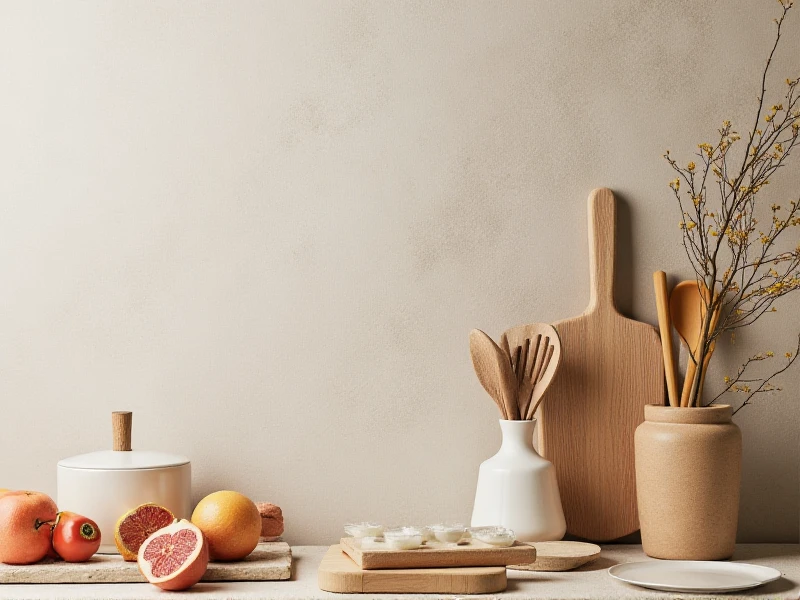The Essential Guide to Choosing Utensils for Your Kitchen
2025-06-12

Here is the SEO-optimized article focusing on "Utensils":
Every cook, whether a seasoned chef or a kitchen novice, knows that success hinges not just on skill, but on the tools in their hand. Utensils are the unsung heroes of every culinary creation. From flipping pancakes to tossing salads, whisking sauces to carving roasts, having the right utensils transforms kitchen tasks from frustrating chores into efficient, enjoyable processes. But with an overwhelming array of options available, selecting the best utensils for your needs can be tricky. This guide explores the fundamental types of kitchen utensils, considerations when buying, and tips for maximizing your investment in these essential tools.
The Core Categories of Kitchen Utensils
Think of utensils broadly falling into these key functional groups, each vital for specific tasks:
1. Food Preparation Utensils: The building blocks of meal-making.
Knives & Cutting Tools: While knives themselves are often categorized separately, accompanying tools like peelers, zesters, graters, and mandolines are crucial utensils.
Scrapers & Spatulas: Flexible scrapers transfer ingredients from chopping boards; flat turners flip food; angled varieties slide under delicate items.
Measuring Tools: Precise measuring spoons and cups ensure recipe accuracy.
2. Cooking Utensils: The tools used during the heat of cooking.
Spoons: Slotted spoons drain liquids; solid spoons stir and serve. Ladles are essential for soups and sauces.
Tongs: Offering precision grip for turning meat, serving pasta, or plating veggies.
Whisks: Create emulsions, blend ingredients smoothly, and incorporate air.
Spatulas & Turners: Heat-resistant versions are crucial for sautéing, frying, and scraping pans.
Basting Brushes: Apply marinades, sauces, or butter precisely.
Thermometers: While technically a device, often grouped with essential cooking utensils for food safety.
Lily Pads (Splat Guards) & Skimmers: Manage splatters and remove surface fats or solids from liquids.
3. Mixing & Baking Utensils: Designed for combining and handling batters and doughs.
Wooden Spoons: Gentle on cookware, excellent for stirring hot sauces or risotto.
Silicone Spatulas: Flexible and heat-resistant, ideal for scraping bowls clean and folding ingredients.
Pastry Brushes & Cutters: Specialized tools for bread and pastry work.
Rolling Pins: Essential for flattening doughs.
4. Serving Utensils: Bring your creations to the table.
Large Slotted Spoons & Ladles: For serving stews, stir-fries, soups, and sauces.
Pasta Forks/Tongs & Servers: Designed to grasp and serve long noodles easily.
Salad Servers: Tongs or spoon and fork sets perfect for tossing and plating salads.
Cake Servers: Ensuring clean slices without crushing delicate cakes.
Pie Slices/Servers: Designed for lifting pie pieces cleanly.
Choosing the Best Utensils for You
With the categories understood, here's what to consider when selecting your essential utensils:
Material Matters:
Stainless Steel: Durable, hygienic, heat-resistant, often Oven-safe, dishwasher safe. Ideal for solid spoons, ladles, tongs, whisks.
Silicone: Flexible, non-stick friendly, heat-resistant, easy to clean, often brightly colored. Perfect for spatulas, brushes, whisk heads, and heat-proof handles.
Nylon/Plastic: Budget-friendly, non-stick friendly. Can scratch and melt at high temperatures. Check temperature ratings.
Wood: Beautiful, gentle on cookware non-stick surfaces, heat resistant. Requires hand washing and occasional oiling to prevent cracking.
Composites: Combinations like stainless steel heads with silicone grips offer versatility.
Functionality & Versatility: Opt for utensils designed for multiple tasks where possible. A slotted turner can flip burgers and fish; a versatile spider skimmer handles pasta and deep-fried items.
Durability & Longevity: Invest in well-made utensils. Look for solid construction, secure junctions between different materials, and reputable brands. They withstand daily use and last for years.
Hygiene & Care: Choose materials that are easy to clean and dishwasher safe when possible. Non-porous surfaces like stainless steel and high-grade silicone resist bacteria better than wood if not diligently maintained.
Cookware Compatibility: Ensure your chosen utensils won't scratch your pots and pans. Wood and silicone are exceptionally safe for non-stick surfaces. Hard metal or plastic tools can damage delicate coatings.
Maximizing Your Utensil Collection
You don't need every utensil in the store. Start with the basics essential for your cooking style: a couple of spatulas/turners, a sturdy mixing spoon or two (wood/ silicone), tongs, a slotted spoon, a ladle, a whisk, and essential prep/scraping tools. Gradually add specialized utensils as you branch into new cuisines or techniques. Store them efficiently near your main prep and cooking areas for easy access – countertop pots, wall-mounted racks, or deep, organized drawers work well.
Ultimately, the right utensils are extensions of your culinary passion. They make cooking safer, more efficient, and more pleasurable. By understanding the different types, prioritizing quality materials suited to your cookware, and building a well-organized collection of practical tools, you equip your kitchen to handle any challenge and turn meal preparation into a consistently rewarding experience. Investing wisely in kitchen utensils truly elevates the entire cooking journey.
Category: